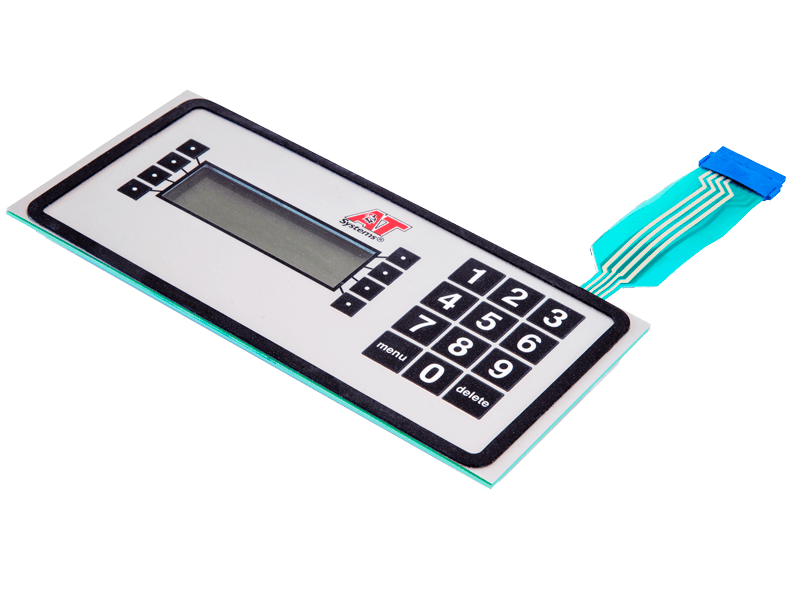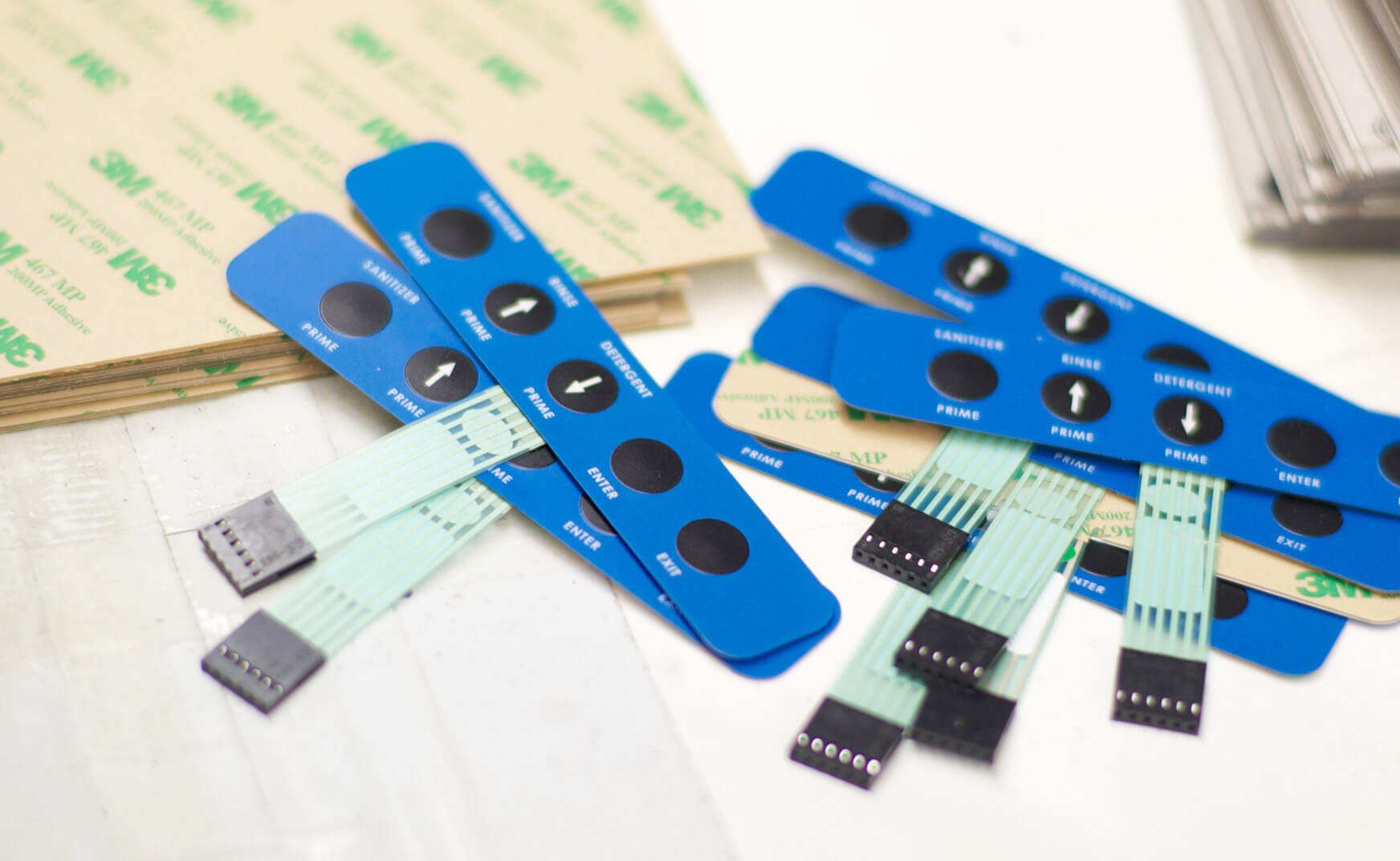Every profitable product line begins with partnering with the right membrane switch manufacturer early on.
Every profitable product line begins with partnering with the right membrane switch manufacturer early on.
Blog Article
Everything About Membrane Layer Switch Over: Recognizing Its Style and Capability
When you believe concerning the control user interfaces in contemporary gadgets, membrane layer buttons typically come to mind. Allow's discover what sets membrane layer changes apart from various other control systems.
What Are Membrane Buttons?

Membrane buttons can likewise be customized relating to form, dimension, and graphics, enabling producers to develop one-of-a-kind user interfaces tailored to particular items. In general, membrane switches play a considerable role in boosting user experience across a broad range of applications.
How Membrane Switches Work
When you push a key on a membrane switch, it triggers an uncomplicated yet reliable system. The leading layer, often made from versatile material, presses down onto a conductive layer below it. This activity bridges the void between conductive traces, completing an electrical circuit. As quickly as the circuit shuts, it sends out a signal to the device's controller, which analyzes your input.
You'll observe that the responsive comments differs based on the switch style, using either a soft click or an extra pronounced reaction. When you release the trick, the membrane layer returns to its original setting, resuming the circuit and quiting the signal. This process happens practically instantaneously, making sure a receptive customer experience.
Membrane layer buttons are preferred as a result of their toughness and resistance to dirt and moisture, making them optimal for different applications, from house home appliances to clinical gadgets. Comprehending this procedure assists you appreciate their widespread usage.
Key Components of Membrane Switches
Understanding the vital elements of membrane layer switches is fundamental for comprehending their performance and layout. The protective layer guards versus environmental aspects and put on, prolonging the switch's lifespan. By comprehending these elements, you'll obtain understanding into just how membrane switches operate and their relevance in different applications.
Products Made Use Of in Membrane Change Layout
The efficiency and durability of membrane layer switches over heavily depend upon the products utilized in their design. You commonly encounter polyester and polycarbonate as key substrates due to their superb stamina and versatility. These products withstand scrapes and chemicals, making them suitable for demanding environments.
The conductive layers typically use silver or carbon, picked for their reliability and conductivity. membrane switch manufacturer. Silver gives exceptional performance, while carbon is a cost-effective choice. For the overlay, you may consider a matte or glossy surface, relying on your visual demands and individual experience
Make particular to select adhesives that hold up against ecological factors like temperature level and moisture. Choosing the appropriate materials will certainly assure your membrane layer switch stands the test of time.
Design Factors To Consider for Membrane Layer Switches
While designing membrane buttons, it's vital to take right into account numerous factors that affect their capability and customer experience. Beginning by focusing on the layout and switch dimension; make particular they're instinctive and simple to navigate.
Verify your layout suits environmental elements, like dampness or temperature variations, which could affect efficiency. By very carefully taking into consideration these components, you'll produce a membrane switch that boosts usability and contentment.
Applications of Membrane Layer Buttons
Membrane layer switches are versatile components found in various applications, from commercial equipment to consumer electronic devices. You'll see their impact in machines that require long lasting user interfaces and in devices that profit from streamlined styles. Comprehending these applications aids you appreciate the performance and usefulness of membrane layer buttons web in day-to-day technology.
Industrial Devices Usage
When you're wanting to boost the performance of industrial tools, membrane switches offer a reputable solution that integrates resilience with easy to use style. These switches are best for extreme atmospheres, providing resistance to dirt, moisture, and chemicals. You'll discover them in control panels for producing machines, a/c systems, and medical devices, where precision and responsiveness are vital. Their low account implies they fit effortlessly right into various tools, saving valuable space while keeping simplicity of use. With adjustable graphics and backlighting options, you can produce an instinctive interface for drivers, enhancing performance and safety and security. Plus, their long life expectancy minimizes upkeep expenses, making them a clever investment for your commercial applications. Embrace membrane buttons to streamline your operations and enhance overall efficiency.
Consumer Electronics Integration
In the domain of customer electronics, content membrane layer switches play an important role in enhancing individual interaction and tool performance. Membrane layer switches also assure durability and resistance to dust and wetness, prolonging the life-span of your electronics. By choosing membrane layer buttons, you improve not just the performance yet also the style of your tools, making daily communications smooth and enjoyable.
Benefits and Negative Aspects of Membrane Switches
While membrane buttons supply an click here to read array of benefits, they additionally come with some downsides that you ought to take into consideration. One considerable advantage is their compact layout, making them optimal for space-constrained applications.

Membrane layer switches can have a shorter life expectancy compared to mechanical buttons, particularly under hefty use. They can also be much less responsive, which might impact customer responses during operation. Balancing these pros and disadvantages will certainly assist you establish if membrane buttons are the appropriate fit for your job.
Often Asked Concerns
For How Long Do Membrane Switches Usually Last?
Membrane changes generally last in between 5 to ten years, depending on use and environmental problems. You'll desire to evaluate aspects like wear, exposure to wetness, and temperature changes to determine their durability properly.
Can Membrane Changes Be Customized for Particular Styles?
Yes, you can customize membrane layer switches to fit particular layouts (membrane switch manufacturer). You'll have the freedom to select shades, shapes, and designs that match your task's requirements, ensuring they mix seamlessly with your general visual
What Is the Cost Variety for Membrane Layer Switch Production?
The expense range for membrane button production generally drops in between $1 and $10 per unit, depending upon aspects like layout complexity, quantity, and materials. You can get quotes from suppliers to find the most effective alternative.

Are Membrane Layer Switches Water Resistant or Immune?
Membrane layer buttons can be designed to be water resistant or immune, relying on products made use of and construction methods. If you need them for wet settings, assure you define those requirements during the design process.
How Do Membrane Switches Over Contrast to Traditional Switches?
Membrane layer switches are normally thinner and more versatile than conventional switches, using a smooth style. They're usually less complicated to cleanse and incorporate, however might not supply the responsive responses you're utilized to with mechanical choices.
Final thought

Report this page